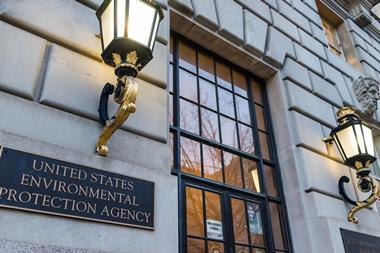Dramatic cuts to key US science agencies and research programmes proposed again, but Congress will have the last word
Total US government spending on research would decline by nearly 17% under the final 2018 budget proposed by President Trump yesterday, according to a preliminary analysis by the American Association for the Advancement of Science (AAAS).
‘If the White House budget plan were to become law, it would devastate America’s science and technology enterprise,’ said Rush Holt, the AAAS chief executive, during a teleconference with reporters. ‘This severe and unjustifiably rapid cut comes at a time when our funding for science research is already far below what would be optimal – we are nowhere close as a nation to investing what we should be investing in research and development,’ added Holt, a former congressman and physicist.
The Obama administration fell just short on its goal of increasing federal spending on R&D to more than 3% of GDP.
One aspect of Trump’s budget that greatly concerns the AAAS, and other science organisations, is a 22% cut proposed for the National Institutes of Health (NIH). During the teleconference, Research!America president Mary Woolley cited estimates that these cuts to the NIH alone in 2018 would mean the loss of nearly 90,000 jobs and $15 billion (£12 billion) in economic activity, as well as 2000 fewer research grants.
Beyond slashing the NIH, the White House also seeks an 11% reduction in funding for the National Science Foundation (NSF), a 17% decrease for the Department of Energy’s (DOE) Office of Science and a 70% cut for the DOE’s energy efficiency and renewable energy research programmes. The Trump proposal would also institute a 44% decrease in funding for the Environmental Protection Agency’s (EPA) science and technology programmes.
‘Assault on science’
Tom Frieden, a former director of the Centers for Disease Control and Prevention (CDC) and acting administrator of the Agency for Toxic Substances and Disease Registry, publicly criticised the White House for proposing a 17% cut to the CDC’s budget. Frieden tweeted that such a cut would bring the agency to its lowest level in more than 20 years. He went on to call the administration’s budget an ‘assault on science’.
Admin proposal for CDC budget: risks Americans' health and safety: pic.twitter.com/jAVbeGyUOG
— Dr. Tom Frieden (@DrFrieden) May 23, 2017
Although Trump’s proposal would shrink the EPA’s overall budget by 30% from current levels, the agency said increased resources will be provided to support its new responsibilities under the recently reformed Toxic Substances Control Act (TSCA) to ensure that new and existing chemicals are evaluated in a timely manner. The EPA added that it will ‘work aggressively’ to complete additional chemical risk assessments from the TSCA list of existing chemicals and meet its requirement to review all current pesticide registrations by 2022.
Among the most controversial aspects of the White House’s budget plan is its call to abolish the Chemical Safety Board (CSB), which carries out independent investigations of industrial chemical accidents, and eliminate the Advanced Research Projects Agency-Energy (Arpa-E), which funds R&D for advanced energy technologies.
Critical safety
Norm Augustine, a former chief executive of Lockheed Martin best known for chairing the influential National Academy of Sciences committee whose 2005 report called for a 10% annual increase in government funding of basic research for seven years, is also sharply critical of Trump’s budget. Augustine doesn’t agree with the administration’s proposal to do away with Arpa-E, although he says he can understand that one might incorrectly believe that industry will pick up the slack for that agency. However, Augustine argues that such a justification does not work when trying to shut down the CSB. ‘That belief certainly can’t apply to the safety board,’ he tells Chemistry World.
Back in March, when Trump had initially floated the idea in his blueprint budget to dissolve the $11 million CSB that has run for almost two decades, there was significant opposition.
Ultimately, it is Congress and not the White House that will determine science agency funding in 2018. In fact, earlier this month Congress reversed course on significant and immediate cuts slated for agencies like the NIH and NSF under Trump’s budget reduction plan for 2017. The House and Senate rejected the president’s strategy and instead produced an omnibus spending package that increased federal R&D by 5%.
‘Congress has made it clear already this year, really in numerous ways, that they do not buy into this really harsh and abrupt approach to science funding,’ said Holt. ‘They have not yet used the phrase “dead on arrival”, but it is pretty clear to me that they simply don’t buy this philosophy and they understand the importance of investment.’

















No comments yet